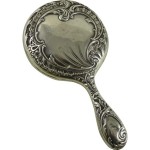Design Mirror and Glass
Mirror and glass are versatile materials used extensively in interior and exterior design applications. Their inherent properties, such as reflectivity, transparency, and malleability, offer a vast spectrum of design possibilities. Understanding the diverse types, applications, and design considerations associated with mirror and glass enhances their effective integration into various spaces.
Types of Mirror and Glass in Design
The selection of mirror and glass depends heavily on the intended application and desired aesthetic. Different types offer unique characteristics that contribute to the overall design.
Standard Mirror: This commonly used mirror type provides a clear, undistorted reflection. It's widely available in various thicknesses and sizes, making it suitable for general applications like bathroom vanities and decorative wall mirrors.
Tinted Mirror: Available in various colors, tinted mirror provides a subdued reflection and can contribute to a specific color scheme or mood within a space. Popular colors include bronze, gray, and blue.
Antique Mirror: Characterized by its subtly distressed and aged appearance, antique mirror adds a vintage or classic touch. Its imperfections in reflectivity create a unique, visually appealing effect.
Tempered Glass: Known for its strength and safety features, tempered glass undergoes a special heat treatment process. When shattered, it breaks into small, relatively harmless fragments. This makes it ideal for high-traffic areas and applications such as shower enclosures and glass tabletops.
Laminated Glass: Comprising two or more layers of glass bonded together with an interlayer, typically of polyvinyl butyral (PVB), laminated glass provides enhanced safety and security. When broken, the interlayer holds the fragments together, preventing shattering and offering increased resistance to impact.
Frosted Glass: Featuring an opaque or translucent surface, frosted glass offers privacy while still allowing light transmission. It's commonly used in bathroom windows, shower doors, and office partitions.
Patterned Glass: Available in a variety of textures and patterns, patterned glass offers decorative appeal and varying degrees of privacy. Its embossed or etched surfaces create visual interest and can diffuse light in unique ways.
Applications of Mirror and Glass in Design
Mirrors and glass have applications far beyond basic functionality. They can be incorporated into various design elements, including furniture, lighting, and architectural features.
Wall Cladding: Large mirror panels or decorative glass can be used as wall cladding to create a sense of spaciousness and enhance the reflection of natural light. Patterned or tinted glass adds visual interest and texture to the walls.
Partitions and Screens: Glass partitions create divisions within a space without compromising light transmission, maintaining an open and airy feel. Frosted or patterned glass options offer privacy where required.
Furniture: Glass tabletops, shelves, and cabinet doors offer a sleek and modern aesthetic. Mirrored furniture can add a touch of glamour and visually expand smaller rooms.
Lighting Fixtures: Glass and mirror are integral components of various lighting fixtures. They diffuse and reflect light, creating different ambient effects. Stained glass, in particular, adds color and artistry to light fixtures.
Design Considerations for Mirror and Glass
Careful consideration of various factors is crucial for effectively integrating mirror and glass into any design.
Light Reflection and Transmission: The placement of mirrors and the type of glass chosen significantly impact light levels and distribution within a space. Careful planning can maximize natural light and create a brighter environment.
Space Enhancement: Strategically placed mirrors can create an illusion of depth and expand the perceived size of a room, particularly in smaller or narrow spaces.
Privacy: When using glass in areas where privacy is required, opting for frosted, patterned, or tinted glass provides visual obscurity while maintaining light flow.
Safety: In areas prone to impact or high traffic, tempered or laminated glass is essential for safety and durability.
Maintenance: Different types of glass and mirror require specific cleaning methods. Understanding these requirements ensures their longevity and maintains their appearance.
Aesthetics: The color, texture, and pattern of glass and mirror should complement the overall design scheme and desired aesthetic of the space.
Sustainability Considerations
Incorporating recycled glass content and choosing manufacturers committed to sustainable practices contributes to environmentally responsible design. Evaluating the embodied carbon of different glass types is also an important factor in minimizing environmental impact.
Frame Selection and Mounting
The choice of frame and mounting hardware can significantly influence the overall aesthetic impact of mirror and glass installations. From minimalist frames to ornate designs, the framing complements the style of the mirror or glass and integrates it seamlessly with the surrounding decor.
Future Trends
Advancements in glass technology continue to expand design possibilities. Smart glass, switchable glass, and electrochromic glass offer dynamic control over light transmission and privacy, influencing future trends in mirror and glass applications.

The Role Decorative Mirrors Play In Interior Design M T Glass

Wall Mounted Rectangular Interior Mirror Glass At Rs 300 Piece In Jaipur

Glass Etching Designs For Mirrors

18 X 23 Inch Mirror Glass At Rs 2500 Piece दर पण क श In Udaipur Id 22941353573

Customize High Definition Silver Mirror For Design Wall Bathroom With Various Shapes Sizes Colors China Glass Made In Com

How Custom Mirror Glass Can Improve Your Interiors Ais

Luxury Designer Mirror For Walls Magnet Flair Glass

97 Best Mirror Design Ideas Designs Glass Etching Fancy Mirrors

839 Flower Design Led Wall Mirror Www Sanitaryarvind Com

Natural Design Mirrors Glass Size Dimension 18x24 Inches At Rs 200 Sq Ft In New Delhi








